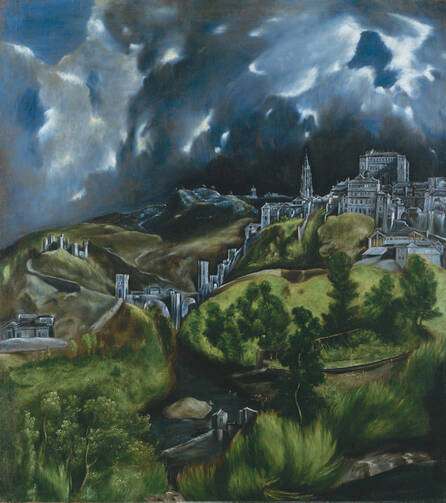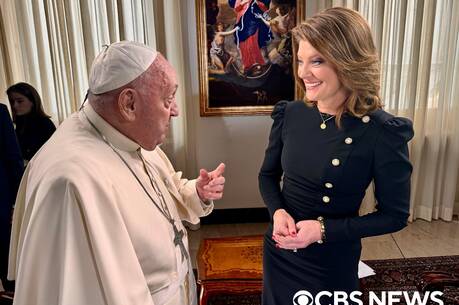In honor of the 400th anniversary of the death of the great Spanish master El Greco, significant exhibitions have been held over the past year in Spain, London and the United States. In August, the Frick Collection mounted a stunning, two-painting mini-exhibition, “Men in Armor,” that paired the Frick’s “Vincenzo Anastagi” and Scipione Pulzone’s “Portrait of Jacopo Boncompagni.” The National Gallery of Art in Washington, which owns seven significant El Grecos, has joined them with three others from various Washington-area collections.
Now the Metropolitan Museum of Art is showing “El Greco in New York,” with 10 works from its own collection and six more from the Hispanic Society of America. Meanwhile, the Frick is presenting its own three El Grecos together on the same wall for the first time. (Seeing “Saint Jerome” at eye level is the special treat here.) The Met’s show—on view through Feb. 1—is installed in one long gallery, but it can easily enthrall as well as educate you for several hours.
Born in 1541 in Candia, the capital of the Venetian colony of Crete, Domenikos Theotokopoulos came from a prosperous family and trained as an icon painter in the post-Byzantine style that influenced him throughout his life. In 1567 he sailed for Venice to study the late Renaissance masters, Tintoretto and Veronese in particular, reveling in their rich use of color but struggling to learn anatomy and the placement of figures in space.
In 1570 he left for Rome, where Michelangelo’s muscular form complemented the free brush work and color he had learned in Venice. Known as El Greco (“the Greek”), he still labored with his figures, as is evident in the Hispanic Society’s “Pietà” (ca. 1575). Slightly earlier, and more effective, is “Christ Healing the Blind” (ca. 1570), a frequent theme suggesting personal enlightenment and serving also as an early exercise in deep perspective.
The artist’s effort to join colore and disegno was resolved only when, moving to Spain in 1576 in an unsuccessful effort to win the patronage of Philip II, he more or less accidentally settled in Toledo, where he remained until his death in 1614. Thirteen of the show’s paintings come from these years, ranging from the still largely realistic work of the 1580s to the more visionary paintings from the late 1590s on, with their elongated forms, intensified colors, flattened space and almost complete elimination of temporal and spatial details.
The spiritual effect of this consciously chosen style is more important still, however, offering the viewer a painterly equivalent of what St. Ignatius Loyola has in mind when he encourages retreatants to place themselves in the scene they mean to meditate, so that they may draw from it a deeper understanding of what they desire in prayer.
Saints Luke, Francis and Jerome (as a penitent) are all at prayer in touching paintings (each dated about 1600) from the Hispanic Society. Ecstatic prayer and union with God, rather than the anguished suffering typical in the period, radiate from the Met’s “Christ Carrying the Cross” (ca. 1580-85). Here Christ caresses rather than carries the cross, his enraptured face looking to heaven in sublime acceptance. There is a startling serenity to the image, as though the Savior were remembering as much as bearing the instrument of salvation. Looking across the room to “The Holy Family” from the same period, you fairly feel the loveliness of grace.
Several paintings well-known to visitors to the Met work to particularly marvelous effect in the show. (You meet them again, rather than looking at them.) This is surely the case with the almost frightening portrait of “Cardinal Fernando Niño de Guevara” (ca. 1600), who was named a cardinal in 1596 and then inquisitor general of Spain by Philip III in 1599.
Seated before a wooden door to the left and yellow damask to the right, the cardinal wears prominent dark glasses through which he looks arrestingly but warily at you. His scarlet cardinal’s robes are imposing but not overly luxurious. Your attention moves between the hard eyes and the very different hands, the right relaxed, the left strangely clenched. The tiled floor seems to fall away to the left, heightening the overall effect of powerful uncertainty.
The cardinal’s portrait was owned (and perhaps commissioned) by his nephew, Pedro Lasso de la Vega, who also owned the Met’s celebrated “A View of Toledo” (ca. 1598-99). Less a conventional cityscape than an ideal vision or hymn, “Toledo” is given an olive-green wall of its own and looks more splendid than ever. Seen from the north (whether by night or day is hard to say), the eastern side of the city high and for the most part to the right on the horizon, the Tagus plunging down to the left under the Alcántara Roman bridge, Toledo is identified as imperial by the Alcázar (the royal palace) and as holy by the cathedral and its soaring tower.
And who is this old man portrayed in the corner between the fierce cardinal and the emblematic city? On a small canvas, with his searching, wistful eyes, bald head and gray beard, wearing a high white ruff and fur-trimmed jacket, he addresses you across the centuries, holding your gaze as long as you stand before him. Very likely it is El Greco himself, presented as modestly here as he will be later, unforgettably, as a worshiping shepherd in the Prado Museum’s magnificent “Adoration of the Shepherds,” of which the Met shows a much smaller version. (El Greco painted the Prado version, between 1612-14, to hang over his own tomb.)
After the “rediscovery” of El Greco in the 19th century, many great artists became enthusiastic about him. Delacroix owned a small version of “The Disrobing.” John Singer Sargent bought a version of “Saint Martin and the Beggar.” Cézanne copied “A Lady in a Fur Wrap” (who may have been El Greco’s mistress and the mother of his son). Manet found him in general “bizarre” but prized his portraits—as had Velázquez two centuries earlier. Pollock did detailed sketches of his paintings at the Met and in particular of “The Vision of Saint John” (ca. 1609-14), the fabulous fragment (the top third has been cut off) that is the largest piece in the current show. Picasso said the work was “Cubist in construction,” and it strongly influenced his brothel scene “Les Demoiselles d’Avignon.”
Seeing this exhibition is first of all like meeting an old friend—and realizing that the person now means more to you than you ever imagined. Almost all of the work here is religious, and much of it takes your breath away as it strains to reveal the transcendent destiny of our material world, not its end but its transformation into spiritual reality—“the redemption of our bodies,” in Paul’s phrase (Rom 8:23). We are not entirely sure about El Greco’s own personal beliefs, though he lived in the Spain of Teresa of Ávila, John of the Cross and Ignatius Loyola, a time of theological renewal and spiritual reform. But clearly he had a passion for interpreting creation, not copying it, in a way that was itself redemptive.








